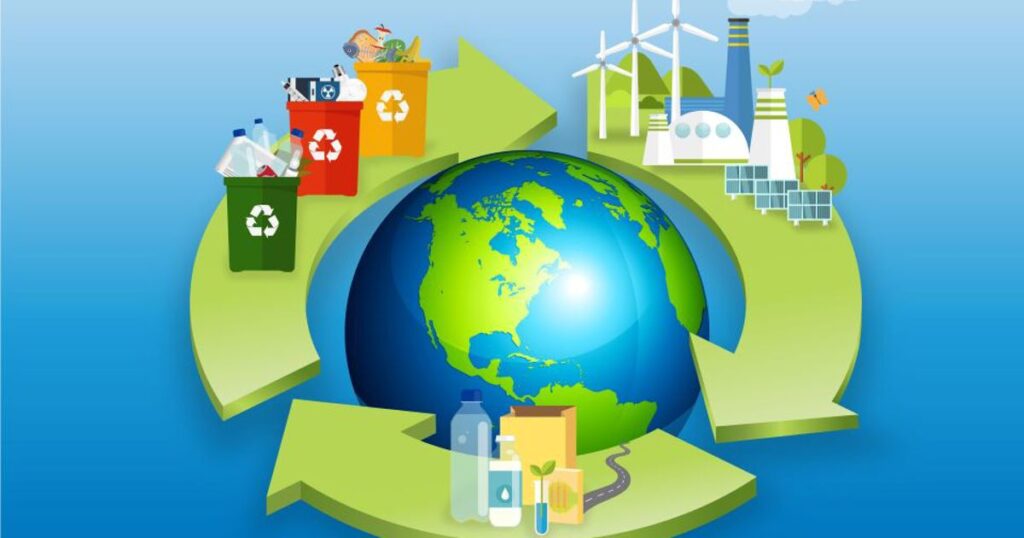
Exploring Sustainable Solutions for Plastic Pollution and Environmental Conservation
Introduction:
Plastic pollution remains one of the most pressing environmental challenges of our time. With the global production of plastics reaching an all-time high, the harmful effects of plastic waste on ecosystems, wildlife, and human health have become increasingly apparent. However, tackling plastic pollution and promoting environmental conservation is not an impossible task. By exploring sustainable solutions, we can work towards a cleaner, healthier planet. This essay will delve into various sustainable solutions for plastic pollution and environmental conservation, highlighting their benefits, challenges, and potential impact.
I. Reduce, Reuse, and Recycle:
One of the most effective ways to tackle plastic pollution is by focusing on the three R’s: reduce, reuse, and recycle. Reducing plastic consumption involves minimizing the use of single-use plastics and promoting the use of sustainable alternatives. Reusable bags, water bottles, and food containers are excellent alternatives to their single-use counterparts. Furthermore, reusing plastic items, such as shopping bags or containers, can significantly decrease waste generation. Finally, recycling plays a crucial role in diverting plastic waste from the landfill and turning it into new products. Promoting recycling awareness and accessibility can encourage individuals and businesses to embrace this eco-friendly practice.
II. Plastic Elimination:
In certain cases, eliminating plastic entirely can be the most sustainable solution. Many organizations and governments worldwide have implemented bans on single-use plastics, such as plastic bags or straws, to reduce plastic waste. These bans often come with incentives for adopting alternative materials or encouraging businesses to offer packaging-free options. The challenge lies in developing viable alternatives and ensuring they have a lower environmental impact. This may involve investing in the research and development of biodegradable or compostable materials that can replace plastic without compromising functionality or affordability.
III. Innovative Technologies:
In recent years, there have been significant advancements in innovative technologies focused on plastic pollution and environmental conservation. These technologies aim to address the plastic waste crisis at its core by converting waste into usable resources. For instance, chemical recycling technologies break down plastic waste into its basic building blocks, allowing for the production of new plastics or other valuable materials. Additionally, designing and implementing efficient waste management systems, such as waste-to-energy conversion plants or anaerobic digestion facilities, can help reduce plastic waste and generate renewable energy simultaneously.

IV. Education and Awareness:
Education and awareness play a crucial role in promoting sustainable solutions for plastic pollution and environmental conservation. By raising awareness about the harmful effects of plastic pollution and providing knowledge on sustainable practices, individuals become empowered to make informed choices. Schools, community organizations, and the media can play a significant role in promoting environmental education. Governments and non-profit organizations can also organize awareness campaigns to encourage responsible waste management, recycling, and the use of sustainable alternatives.
V. Regulatory Measures:
In addition to voluntary efforts, the implementation of regulatory measures can drive sustainable solutions for plastic pollution and environmental conservation. Governments can enact legislation that restricts the use of single-use plastics, promotes extended producer responsibility, and encourages the use of sustainable materials. Furthermore, implementing deposit-return systems for plastic bottles and other containers can incentivize recycling and ensure responsible waste management. Such measures require collaboration between policymakers, industries, and consumers to be effective.

Conclusion:
Plastic pollution and environmental conservation require sustainable solutions that address the root causes of the problem. By focusing on reducing, reusing, and recycling, eliminating plastic when possible, embracing innovative technologies, promoting education and awareness, and implementing regulatory measures, we can work towards a cleaner and more sustainable future. While each of these solutions faces unique challenges and requires concerted efforts from various stakeholders, their combined impact has the potential to significantly reduce plastic pollution and foster environmental conservation. It is time for individuals, communities, governments, and industries to come together and take meaningful action for a plastic-free world.
All Categories
- Agricultural Methods
- Agriculture and Women Small Farmers Rights Awareness
- Climate Change
- Disable and Human Rights
- Disable Jobs
- Donation
- Education
- Health Issues
- Organic Foods
- Organic Vegetables
- Orphans Children
- Plastic production and disposal
- Services
- Sinking in Scarcity
- Success Stories
- Uncategorized
- Waste Management
- Women Rights
- Youth Empowerment




